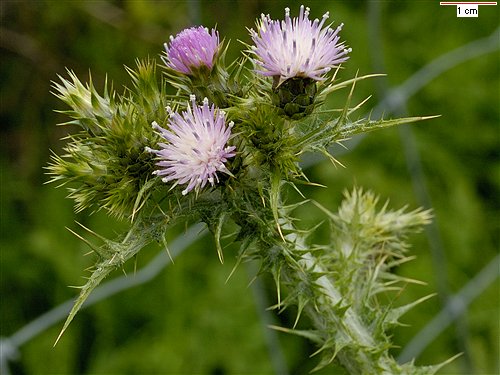Hosted by the University of Washington Herbarium, Burke Museum
Publication: Fl. Londin. 2(6,61): plate 55. 1789.
Origin: Introduced from Europe
Herbarium search: CPNWH
Notes: FNA 19: "Carduus tenuiflorus has been reported from New Jersey, Texas, and Washington; I have not seen specimens from those states.
Carduus pycnocephalus and C. tenuiflorus are similar annuals with small, usually tightly clustered heads. The number of heads per capitulescence is usually ultimately greater in C. tenuiflorus, but early season plants of this species often have only a few heads. At the end of the growing season the fruiting heads of C. tenuiflorus are aggregated in dense, subspheric clusters. Stem wings tend to be more pronounced in C. tenuiflorus. Fresh corollas of C. pycnocephalus are rose-purple whereas those of C. tenuiflorus have a more pinkish tinge, but this difference is subtle and not reliable on herbarium material. The phyllaries of C. tenuiflorus are membranous-margined, more or less glabrate, and lack the short, stiff, upwardly appressed trichomes of C. pycnocephalus. All published chromosome counts for Carduus tenuiflorus from both Old and New World material are the same.
The two species sometimes grow in mixed populations and at times appear to intergrade. Hybridization has been reported in Europe (S. W. T. Batra et al. 1981) and is suspected to occur in California. Hybrids between C. pycnocephalus and C. tenuiflorus have been designated Carduus ×theriotii Rouy."
Last updated 7/1/2020 by David Giblin.

